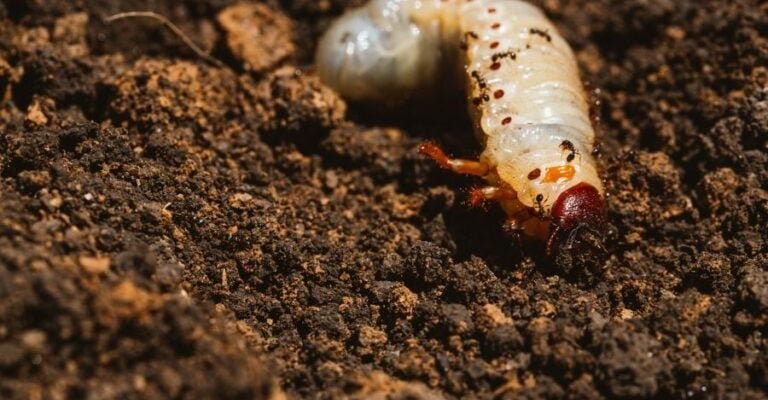
Think of your yard as a bustling city. Just like rain brings people out in droves to enjoy a sunny day, it also stirs up life in the soil. Grub worms, or larvae of beetles, thrive in certain conditions, and heavy rains can create the perfect environment for them. In this article, we’ll dive into how weather affects these little critters and what you can do about it.
What Are Grub Worms?
Grub worms are the larval stage of various beetle species, especially those belonging to the Scarabaeidae family. They typically look like little white or cream-colored “C” shapes. These worms live underground and feed on the roots of grass and plants. Interestingly, there are several types of grub worms, but the most common ones you’ll encounter in your yard are either **Japanese beetle larvae** or **June bug larvae**.
Grub worms can be quite a problem for lawns. They eat the grass roots, which can lead to brown patches and even dead spots in your yard. It’s almost like they throw a big party at the root system’s expense! If you start noticing these issues after a rainstorm, it might not be a coincidence.
How Heavy Rains Influence Grub Worm Populations
You might be asking yourself, “Why do heavy rains seem to cause more grub worms?” Well, here’s the thing: when the soil gets saturated with water, it creates a hospitable environment for these larvae. Grub worms thrive in moist conditions, which help them survive and flourish.
During and after heavy rain, the excess moisture can bring them closer to the surface. This is partly because the moisture dissolves nutrients and makes it easier for them to move around. As they migrate, you might spot more of them crawling near the surface, which can be alarming if you love your lawn.
But it’s not just about visibility. Heavy rains can also lead to more **adult beetles** emerging from the soil. They might lay eggs just after a rain, which means an uptick in grub worms in the near future. If you see increased activity after a heavy downpour, it could signal a population boom.
Signs of Grub Worm Infestation
If you’re concerned about your lawn after heavy rains, keep an eye out for several signs that may indicate a grub worm infestation. Here are some clues to look for:
- Brown patches: If your lawn has areas that look dry or dead, it could be a sign that grub worms are munching on the roots.
- Easy to pull grass: When you tug on sections of grass, and they come out easily without roots, it’s a red flag.
- Increased animal activity: If you notice birds or other animals digging in your lawn, they might be looking for grubs.
Checking for these signs regularly can help you catch grubs before they wreak too much havoc. It’s like being a detective for your garden!
What to Do About Grub Worms
If you’ve spotted grub worms in your lawn after a rain, don’t panic! There are steps you can take to manage their population. Here’s a simple plan of action:
1. **Inspect your lawn:** Regularly check for signs of grubs. If you spot any issues, consider digging a small patch of grass to see what’s underneath.
2. **Water wisely:** Avoid overwatering your lawn. If the soil is consistently moist, it can create an ideal environment for grub worms.
3. **Use nematodes:** Beneficial nematodes are microscopic worms that feed on grubs. They’re a natural way to control grub populations without harming your lawn or the environment.
4. **Apply insecticides smartly:** If the infestation is severe, using insecticides specifically designed for grub worms is an option. Just be sure to follow all instructions and consider the impact on beneficial insects too.
Taking proactive steps will help you maintain a healthy lawn and minimize the damage grub worms can cause.
Preventing Grub Worms in the Future
Once you’ve dealt with any current grub problems, it’s a good idea to think about prevention. Here are a few strategies to keep your lawn healthy and less appealing to grubs:
– **Maintain a healthy lawn:** Regularly aerate, fertilize, and mow your lawn. A robust lawn is less likely to suffer from grub damage.
– **Choose resistant grass types:** Some grass types are more resistant to grub damage. Consider planting these in your yard to minimize future issues.
– **Monitor beetle activity:** Keep an eye on adult beetle populations in your area, especially after heavy rains. If you see a spike, it might be time to apply preventive measures.
Taking these steps can help create a less inviting environment for grub worms, leading to a healthier and more resilient lawn over time.
So, are grub worms more common after heavy rains? The answer is yes, they often are! The increased moisture creates ideal conditions for these pests, making it easier for them to thrive. By being aware of the signs of infestation and taking proactive steps, you can protect your lawn from these unwelcome guests.
Remember to regularly inspect your yard, maintain its health, and apply preventive measures. After all, a vibrant lawn not only enhances your home’s beauty but also plays a vital role in keeping grub worms at bay. So, the next time you notice a heavy rain shower, you’ll know how to keep your lawn safe and sound!

